Ptelea trifoliata, Common Hoptree
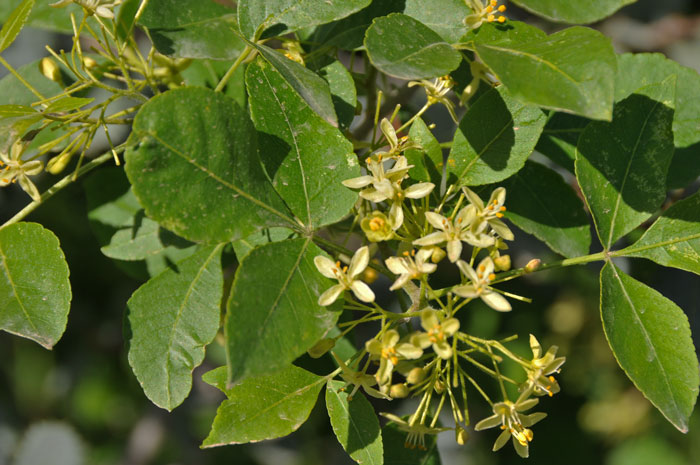
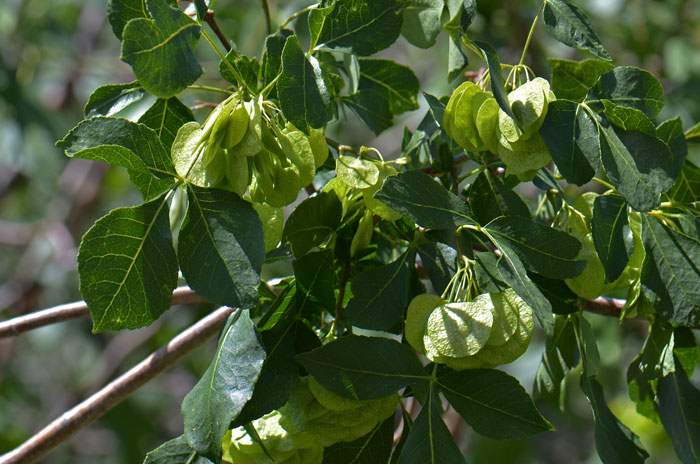
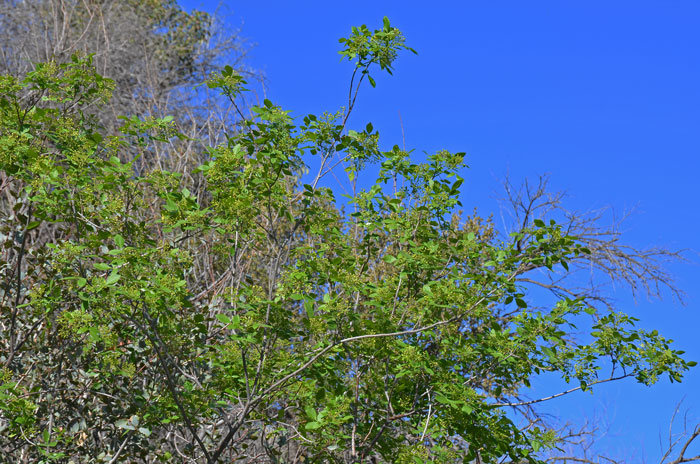
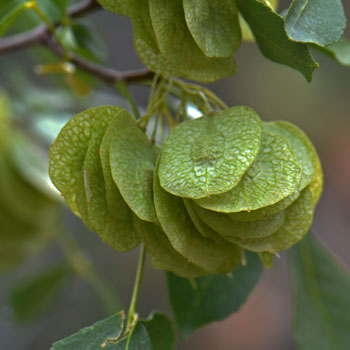
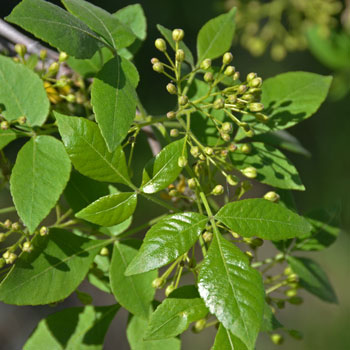
Scientific Name: Ptelea trifoliata
Common Name: Common Hoptree
Also Called: Hoptree, Wafer Ash, Western Hoptree, Spanish (Cola de Zorillo)
Family: Rutaceae, Rue or Citrus Family
Synonyms: (Ptelea angustifolia)
Status: Native
Duration: Perennial
Size: Up to 20 feet high.
Growth Form: Shrub or small tree; bark of twigs brown or dark purple.
Leaves: Green, dark green or bluish-green, turning yellow in fall; may be glaucous beneath, lustrous above; leaves compound, trifoliolate or trifoliate, leaflets ovate or lanceolate.
Flower Color: Greenish-white to pale yellow; small flowers; fruit wafer-like samara with wings.
Flowering Season: May and June; April in Texas.
Elevation: 3,500 to 8,500 feet.
Habitat Preferences: Common in pine belt, often in canyons.
Recorded Range: Ptelea trifoliata is found in the central south, and eastern ½ of the United States; and as far north as Ontario and Quebec, Canada. Ptelea trifoliata is essentially an eastern and northern species and populations in Arizona and Utah represent the southern and western most limits of this species in North America.
North America & US County Distribution Map for Ptelea trifoliata.
U.S. Weed Information: No information available.
Invasive/Noxious Weed Information: No information available.
Wetland Indicator: In North America Ptelea trifoliata has the following wetland designations: Arid West, UPL; Atlantic and Gulf Coastal Plain, FACU; Eastern Mountains and Piedmont, FAC; Great Plains, FAC; Midwest, FACU; Northcentral & Northeast, FACU; Western Mountains, Valleys, and Coast, UPL.
UPL = Obligate Upland, almost never occur in wetlands
FACU = Facultative Upland, usually occur in non-wetlands, but may occur in wetlands
FAC = Facultative, occur in wetlands and non-wetlands.
Threatened/Endangered Information: In North America Ptelea trifoliata is listed as Threatened or Endangered by the following 3 states; New Jersey, Wafer-ash, Endangered; New York, Wafer-ash, Endangered; Pennsylvania, Common Hop-tree, Threatened.
Genus Information: In North America there are 3 species and 15 accepted taxa overall for Ptelea. World wide, The Plant List includes 5 accepted species names with 15 infraspecific rank for the genus.
In the Southwest United States; Arizona, California, New Mexico, Texas and Utah each have 1 species of Ptelea, Nevada has 0 species. All data is approximate and subject to taxonomic changes.
There are 8 varieties and 4 sub-species in Ptelea trifoliata.
Comments: Ptelea trifoliata is widespread and variable in leaf shape across the United States with 8 varieties and 4 sub-species. The genus Ptelea is a member of Rutaceae, the Citrus family. To some, Ptelea trifoliata looks and smells like hops. There are reports of the bitter fruits of this species being used to make hops. This species has been reported as perhaps causing dermatitis in some people.

